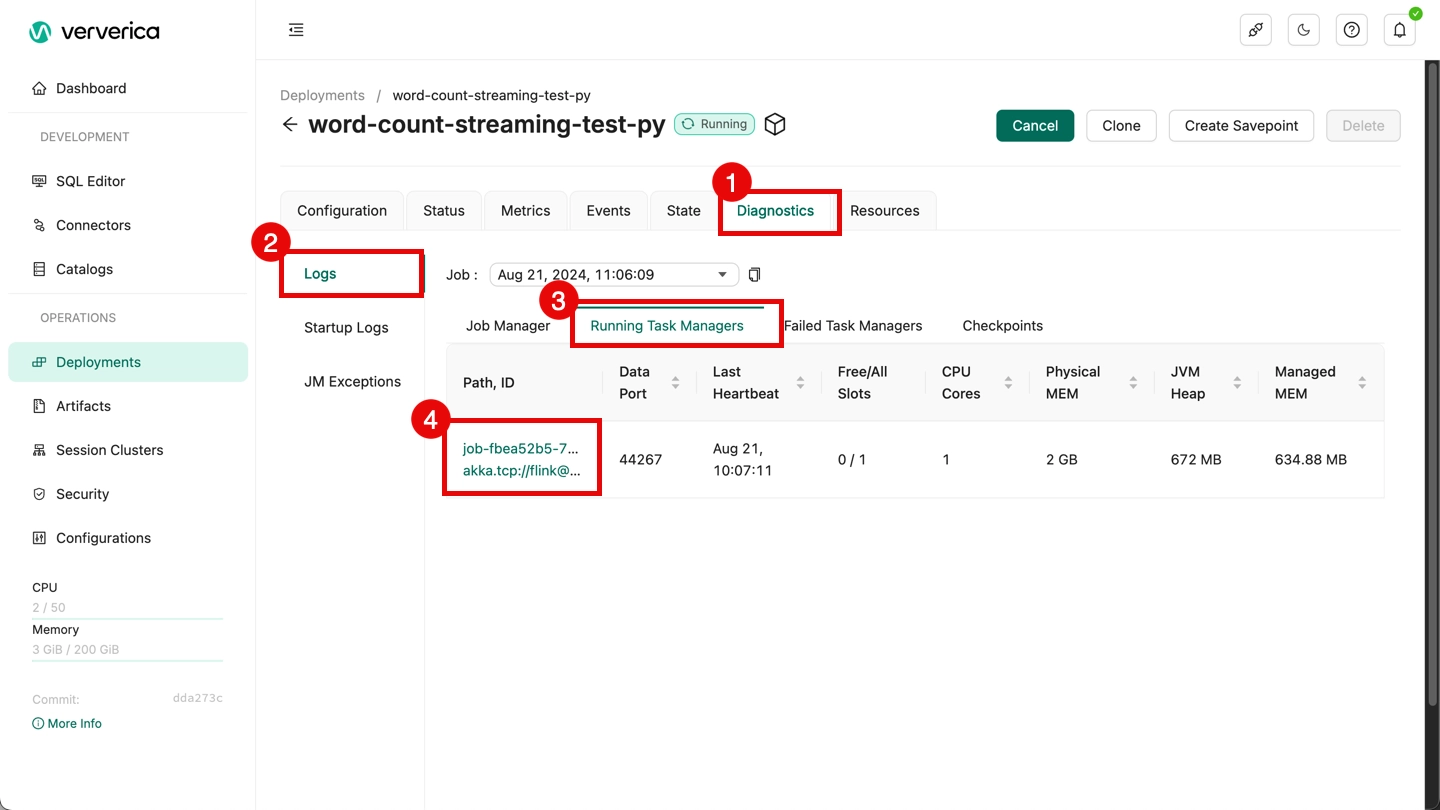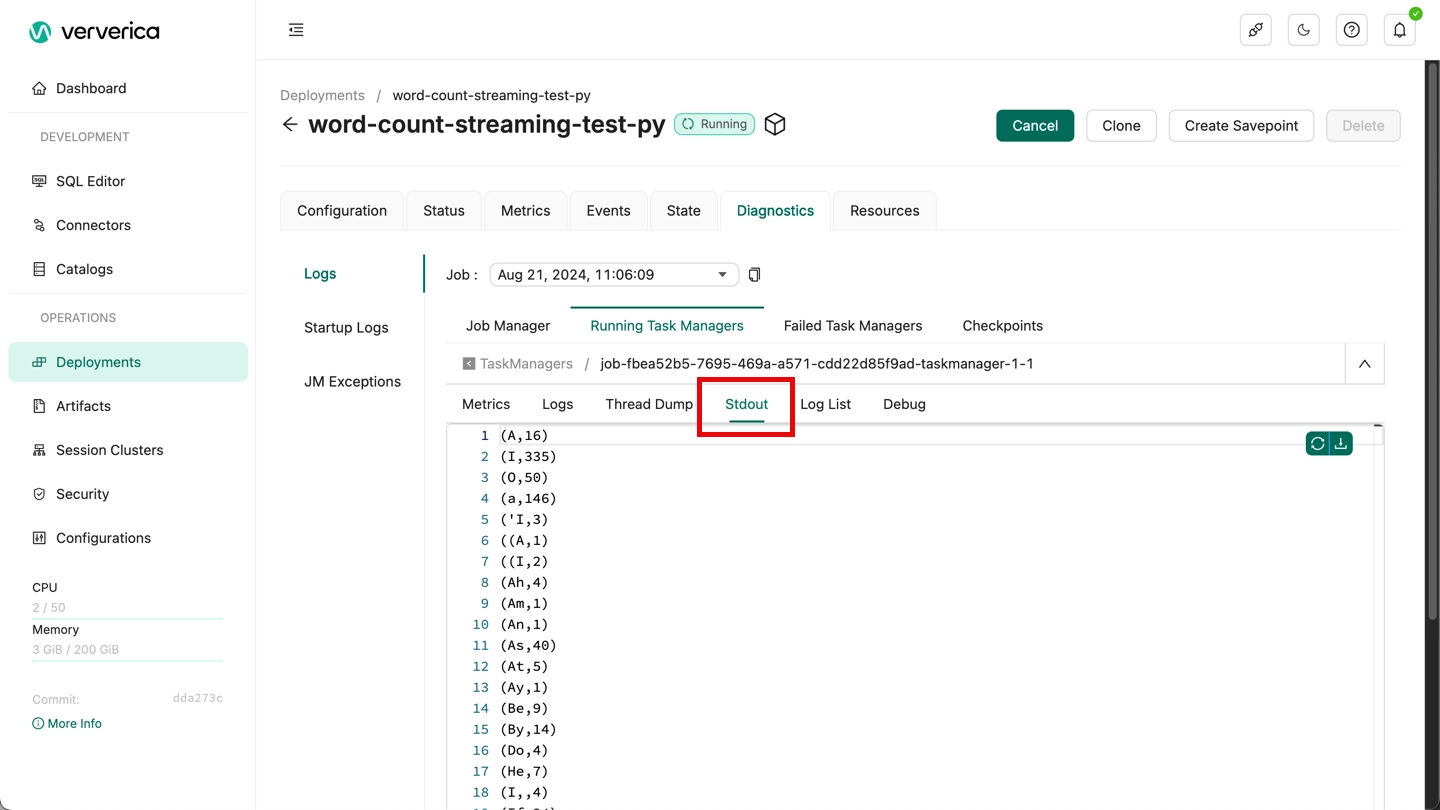Getting started with a Python deployment
Overview
Ververica Cloud allows you to run Python Deployments. This topic describes how to quickly set up a Python Deployment, run it, and view the outputs in Ververica Cloud.
Prerequisites
You must have created an existing account and workspace (for example by following the steps in Get started).
Step 1: Prepare the Python and input data for testing
You need to download the following files to be used in this tutorial:
- Download word_count_streaming.py to your local machine.
- Download Shakespeare.txt to your local machine.
Step 2: Upload the artifact files
To upload the artifact files:
-
On your Dashboard page, click the workspace name that you want to open.
The workspace Console will be displayed.
-
Display the Artifacts page.
-
To upload the artifacts, do one of the following:
- Click Upload Artifact, navigate to and select the downloaded files, then click Open.
- Drag the artifact files from the download location into the Artifacts table.
The artifacts will be listed.
Step 3: Create a Python deployment
To create the Python deployment:
-
In the Console, click Deployments > Create Deployment and choose Python Deployment from the drop-down menu.
-
Fill in the Create Deployment form as follows (you might need to scroll down to see all the options):
- Deployment Type: PYTHON
- Deployment Name: Enter word-count-streaming-test-py for this tutorial.
- Engine Version: Leave this set to the default version.
- PYTHON URI: Click in the field and select the word_count_streaming.py from the list. (Note: Console will fill in the required URI when you select the Python file.)
- Entry Module: Leave blank.
- Entry Point Main Arguments:
--input /flink/usrlib/Shakespeare.txt - Python Libraries: Leave blank
- Python Archives: Leave blank
- Additional Dependencies: Click in the field and select the Shakespeare.txt from the list.
- Description: Leave blank for this tutorial.
- Label: Leave blank for this tutorial.
-
Click Deploy. The deployment will be listed. Until you start the deployment, it will be listed as CANCELLED (i.e. not running).
Step 4: Start the deployment
To start the deployment:
-
To the right of the deployment name, click Start in the Actions column.
-
Fill in the startup option information. For this tutorial, use the default settings:
- Mode: Initial Mode (see Start deployment for more information.)
- Configure Autopilot: disabled (see Configure Autopilot and Scheduled Tuning for more information.)
-
Click Start.
- Initially, the state will be STARTING.
- After the deployment is started, the deployment status changes to RUNNING.
Step 5: View the results
To view the results:
-
On the Deployments page, click the name of the Deployment.
-
Click the Diagnostics tab.
-
Click the Logs > Running Task Managers tab.
-
Click the entry in the Path, ID column.

-
Display the Stdout tab to see the results.
